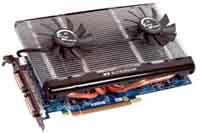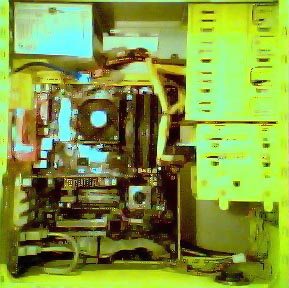As for horrible DX9 support on the FX cards, gee whiz, I never noticed the difference between the FX5900 and the 6600GT except for the FPS increase now that you mention it........ am I blind or is just the apps I'm using?
Why would PCI expansion be that much better than an onboard chip? I mean, many onboard solutions are already AGP compliant and use at least 64mb of reasonably fast DDR system ram.
Have you tried maxing out the system ram shared to the onboard video chip in your BIOS? While you are in the bios, you can set your AGP aperature as well, and perhaps the transfer mode for the AGP to 4x if the options exist.
If you have, say, 512mb of RAM and share 128mb, (if thats possible), then your system can only use the remainder of memory not allocated to the onboard video.
Say if you only have 256mb of RAM, and you share 64mb to the onboard video, you are left with a serious shortfall in RAM, and yes, more ram would help.
The only recent PCI card I've seen running in a modern and powerful PC was a GF FX5200 PCI card and it was horribly slow, and my experience in upgrading onboard videoto PCI video has been that it only offers marginal improvement.
The better PCI graphics cards also tend to be expensive by contrast to their AGP and PCIe counterparts, and this brings the financial aspect of "flogging a dead horse" to light.
The reality is that any card you add to that machine is not going to give you great graphics, in fact, they may still disappoint you.
There are two real upgrade options and they both mean a major system overhaul, but there is a big difference in cost.
The first and cheapest is to buy a nForce2 mainboard and a powerful Sempron CPU, unless you already have a powerful socket A CPU you could transfer to the new rig. The same goes for the RAM, if you already have at least PC2700 RAM, then you could transfer that as well.
To

Simviation Forums
Flight Simulator and other chat
 Mainboard: Asus P5K-Premium, CPU=Intel E6850 @ x8x450fsb 3.6ghz, RAM: 4gb PC8500 Team Dark, Video: NV8800GT, HDD: 2x1Tb Samsung F3 RAID-0 + 1Tb F3, PSU: Antec 550 Basiq, OS: Win7x64, Display: 24&
Mainboard: Asus P5K-Premium, CPU=Intel E6850 @ x8x450fsb 3.6ghz, RAM: 4gb PC8500 Team Dark, Video: NV8800GT, HDD: 2x1Tb Samsung F3 RAID-0 + 1Tb F3, PSU: Antec 550 Basiq, OS: Win7x64, Display: 24&




